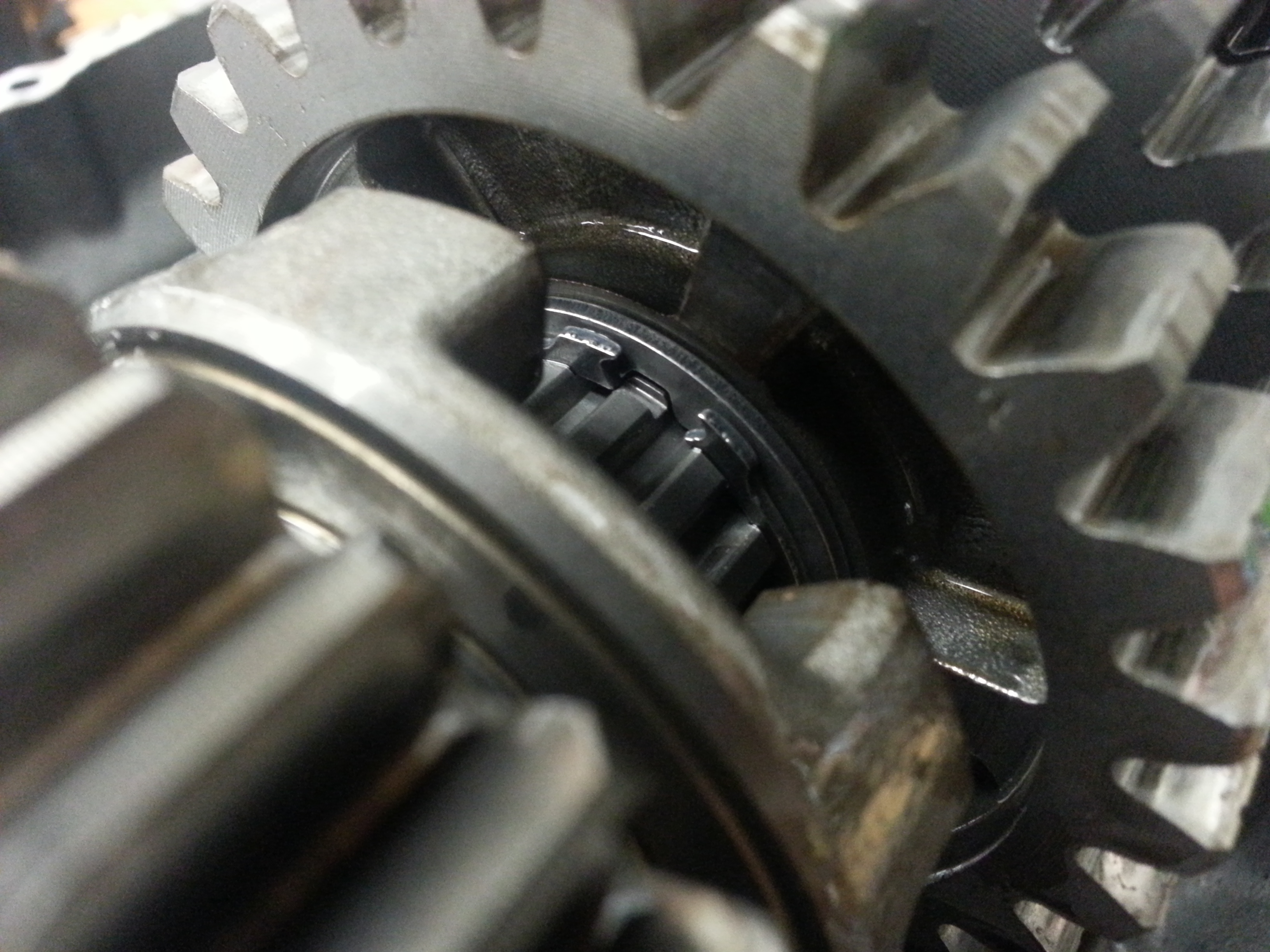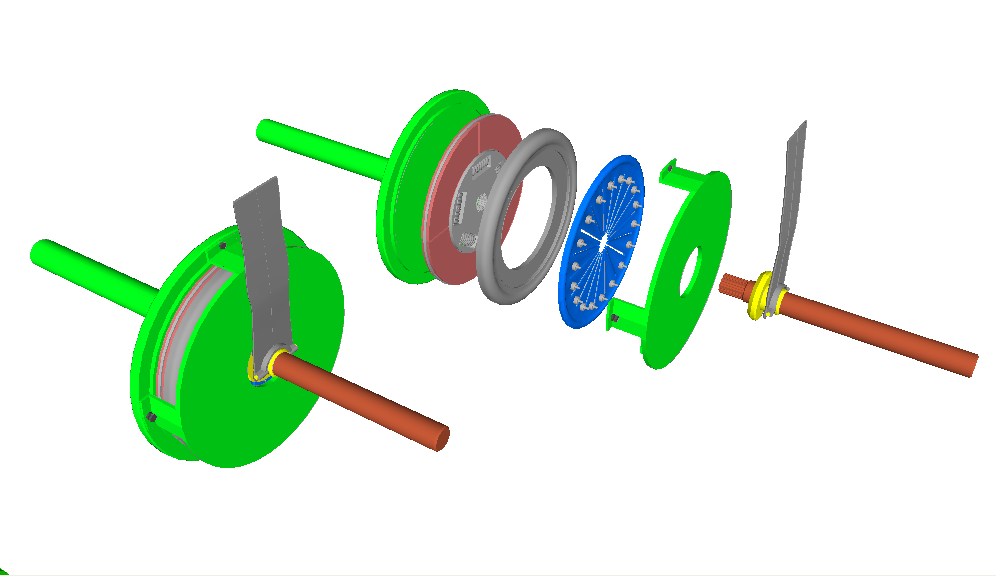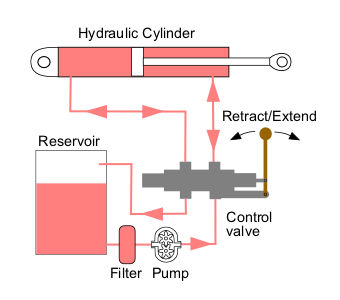|
Transmission (mechanics)
A transmission (also called a gearbox) is a mechanical device which uses gears to change the speed or direction of rotation in a mechanical device. Many transmissions have multiple gear ratios, however there are also transmissions that use a single fixed gear ratio. Most currently-produced passenger cars with petrol or diesel engines use transmissions with 5-8 forward gear ratios and one reverse gear ratio. Electric vehicles typically use a single-speed or two-speed transmission. Fixed-ratio transmissions The simplest transmissions used a fixed ratio to provide either a gear reduction or increase in speed, sometimes in conjunction with a change in the orientation of the output shaft. Examples of such transmissions are used in helicopters, wind turbines and power take-offs (PTOs) for tractors. In the case of a wind turbine, the first stage of the gearbox is usually a planetary gear, to minimize the size while withstanding the high torque inputs from the turbine. Mult ... [...More Info...] [...Related Items...] OR: [Wikipedia] [Google] [Baidu] |
Automatic Transmission
An automatic transmission (sometimes abbreviated to auto or AT) is a multi-speed transmission used in internal combustion engine-based motor vehicles that does not require any input from the driver to change forward gears under normal driving conditions. It typically includes a transmission, axle, and differential in one integrated assembly, thus technically becoming a transaxle. The most common type of automatic transmission is the hydraulic automatic, which uses a planetary gearset, hydraulic controls, and a torque converter. Other types of automatic transmissions include continuously variable transmissions (CVT), automated manual transmissions (AMT), and dual-clutch transmissions (DCT). An electronic automatic transmission (EAT) may also be called an electronically controlled transmission (ECT), or electronic automatic transaxle (EATX). A hydraulic automatic transmission may also colloquially called a " slushbox" or simply a "torque converter", although the latter term c ... [...More Info...] [...Related Items...] OR: [Wikipedia] [Google] [Baidu] |
Dog Clutch
A dog clutch (also known as a positive clutch or dog gears) is a type of clutch that couples two rotating shafts or other rotating components by engagement of interlocking teeth or dogs rather than by friction. The two parts of the clutch are designed such that one will push the other, causing both to rotate at the same speed and will never slip. In engineering, a "dog" is a tool or device used to lock two components in relation to each other. Dog clutches are used where slip is undesirable and/or the clutch is not used to control torque. Without slippage, dog clutches are not affected by wear in the same way that friction clutches are, but result in shock when shafts of different speeds are engaged. For this reason they are best used when sudden starting action is acceptable and the inertia of the system is small. Dog clutches are used inside constant-mesh manual transmissions to lock different gears to the rotating input and output shafts. A synchromesh arrangement ensures s ... [...More Info...] [...Related Items...] OR: [Wikipedia] [Google] [Baidu] |
Side-by-side (vehicle)
A side-by-side vehicle (SxS or SSV), is an off-road vehicle with a minimum of two seats positioned side-by-side and enclosed within a roll cage structure. They have a minimum of four wheels (or continuous tracks) and are operated by foot controls and a steering wheel. Depending on use and application they can also be called a utility task vehicle, utility terrain vehicle (UTV), recreational off-highway vehicle (ROV), or multipurpose off-highway utility vehicle (MOHUV). Side-by-sides may be included in the category of all-terrain vehicles (ATVs), but do not include vehicles with saddle-seats that are operated using handlebar-type controls that are the conventional meaning of that term. Definition and standards The American National Standards Institute (ANSI) publishes two standards for side-by-sides. ANSI/OPEI B71.9-2016 sets standards for ''multipurpose off-highway utility vehicles'' (MOHUV) specifically intended for utility use which are intended to transport persons and cargo, ... [...More Info...] [...Related Items...] OR: [Wikipedia] [Google] [Baidu] |
Revolutions Per Minute
Revolutions per minute (abbreviated rpm, RPM, rev/min, r/min, or with the notation min−1) is a unit of rotational speed or rotational frequency for rotating machines. Standards ISO 80000-3:2019 defines a unit of rotation as the dimensionless unit equal to 1, which it refers to as a revolution, but does not define the revolution as a unit. It defines a unit of rotational frequency equal to s−1. The superseded standard ISO 80000-3:2006 did however state with reference to the unit name 'one', symbol '1', that "The special name revolution, symbol r, for this unit is widely used in specifications on rotating machines." The International System of Units (SI) does not recognize rpm as a unit, and defines the unit of frequency, Hz, as equal to s−1. :\begin 1~&\text &&=& 60~&\text \\ \frac~&\text &&=& 1~&\text \end A corresponding but distinct quantity for describing rotation is angular velocity, for which the SI unit is the ra ... [...More Info...] [...Related Items...] OR: [Wikipedia] [Google] [Baidu] |
Manual Transmission
A manual transmission (MT), also known as manual gearbox, standard transmission (in Canada, the United Kingdom, and the United States), or stick shift (in the United States), is a multi-speed motor vehicle transmission (mechanics), transmission system, where gear changes require the driver to manually select the gears by operating a gear stick and clutch (which is usually a foot pedal for cars or a hand lever for motorcycles). Early automobiles used ''sliding-mesh'' manual transmissions with up to three forward gear ratios. Since the 1950s, ''constant-mesh'' manual transmissions have become increasingly commonplace and the number of forward ratios has increased to 5-speed and 6-speed manual transmissions for current vehicles. The alternative to a manual transmission is an automatic transmission; common types of automatic transmissions are the Automatic transmission#Hydraulic automatic transmissions, hydraulic automatic transmission (AT), and the continuously variable transmissio ... [...More Info...] [...Related Items...] OR: [Wikipedia] [Google] [Baidu] |
Auto, Motor Und Sport
''Auto Motor und Sport'', often stylized as auto motor und sport and abbreviated AMS or AMuS, is a German automobile magazine. It is published fortnightly by Motor Presse Netzwerk's subsidiary Motor Presse Stuttgart, a specialist magazine publisher that is 59.9% owned by the publishing house Gruner + Jahr. History ''Motor und Sport'' was initially published in 1923 in Pößneck, Germany. It was founded by Fritz Pullig and Felicitas Von Reznicek. Pullig began his career by racing motorcycles in 1912 at the Nurburgring. Pullig was also an aviation pioneer (his first flight was at what is now Hangelarer Airport on July 17, 1909) and became a flight instructor in 1913. He served as a soldier in WWI and WWII. After the latter, Pullig became an acclaimed author, writing over 30 novels. Notable works include ''Lockfuhrer Lund'' (1940), ''Du bist nicht Sylvia'' (1939) and ''Der Held seiner Liebe''. In the early 1950s, Pullig was a prototype test driver for Daimler Benz and Opel car prot ... [...More Info...] [...Related Items...] OR: [Wikipedia] [Google] [Baidu] |
Gear Train
A gear train is a mechanical system formed by mounting gears on a frame so the teeth of the gears engage. Gear teeth are designed to ensure the pitch circles of engaging gears roll on each other without slipping, providing a smooth transmission of rotation from one gear to the next. Features of gears and gear trains include: * The gear ratio of the pitch circles of mating gears defines the speed ratio and the mechanical advantage of the gear set. * A planetary gear train provides high gear reduction in a compact package. * It is possible to design gear teeth for gears that are non-circular, yet still transmit torque smoothly. * The speed ratios of chain and belt drives are computed in the same way as gear ratios. See bicycle gearing. The transmission of rotation between contacting toothed wheels can be traced back to the Antikythera mechanism of Greece and the south-pointing chariot of China. Illustrations by the Renaissance scientist Georgius Agricola show gear trains with ... [...More Info...] [...Related Items...] OR: [Wikipedia] [Google] [Baidu] |
Clutch
A clutch is a mechanical device that engages and disengages power transmission, especially from a drive shaft to a driven shaft. In the simplest application, clutches connect and disconnect two rotating shafts (drive shafts or line shafts). In these devices, one shaft is typically attached to an engine or other power unit (the driving member), while the other shaft (the driven member) provides output power for work. Typically the motions involved are rotary, but linear clutches also exist. In a motor vehicle, the clutch acts as a mechanical linkage between the engine and transmission, and briefly disconnects, or separates the engine from the transmission system. This disconnects the drive wheels whenever the clutch pedal is depressed, allowing the driver to smoothly change gears. In a torque-controlled drill, for instance, one shaft is driven by a motor, and the other drives a drill chuck. The clutch connects the two shafts so they may be locked together and spin at the ... [...More Info...] [...Related Items...] OR: [Wikipedia] [Google] [Baidu] |
Fluid Coupling
A fluid coupling or hydraulic coupling is a hydrodynamic or 'hydrokinetic' device used to transmit rotating mechanical power.Fluid coupling ''encyclopedia2.thefreedictionary.com'' It has been used in s as an alternative to a mechanical . It also has widespread application in marine and industrial machine drives, where variable speed operation and controlled start-up without [...More Info...] [...Related Items...] OR: [Wikipedia] [Google] [Baidu] |
Torque Converter
A torque converter is a type of fluid coupling that transfers rotating power from a prime mover, like an internal combustion engine, to a rotating driven load. In a vehicle with an automatic transmission, the torque converter connects the power source to the load. It is usually located between the engine's flexplate and the transmission. The equivalent location in a manual transmission would be the mechanical clutch. The main characteristic of a torque converter is its ability to increase torque when the output rotational speed is so low that it allows the fluid coming off the curved vanes of the turbine to be deflected off the stator while it is locked against its one-way clutch, thus providing the equivalent of a reduction gear. This is a feature beyond that of the simple fluid coupling, which can match rotational speed but does not multiply torque and thus reduces power. Hydraulic systems By far the most common form of torque converter in automobile transmissions is the hydr ... [...More Info...] [...Related Items...] OR: [Wikipedia] [Google] [Baidu] |
Hydraulic Machinery
Hydraulic machines use liquid fluid power to perform work. Heavy construction vehicles are a common example. In this type of machine, hydraulic fluid is pumped to various hydraulic motors and hydraulic cylinders throughout the machine and becomes pressurized according to the resistance present. The fluid is controlled directly or automatically by control valves and distributed through hoses, tubes, or pipes. Hydraulic systems, like pneumatic systems, are based on Pascal's law which states that any pressure applied to a fluid inside a closed system will transmit that pressure equally everywhere and in all directions. A hydraulic system uses an incompressible liquid as its fluid, rather than a compressible gas. The popularity of hydraulic machinery is due to the very large amount of power that can be transferred through small tubes and flexible hoses, the high power density and a wide array of actuators that can make use of this power, and the huge multiplication of forces t ... [...More Info...] [...Related Items...] OR: [Wikipedia] [Google] [Baidu] |
Epicyclic Gearing
An epicyclic gear train (also known as a planetary gearset) consists of two gears mounted so that the center of one gear revolves around the center of the other. A carrier connects the centers of the two gears and rotates the planet and sun gears mesh so that their pitch circles roll without slip. A point on the pitch circle of the planet gear traces an epicycloid curve. In this simplified case, the sun gear is fixed and the planetary gear(s) roll around the sun gear. An epicyclic gear train can be assembled so the planet gear rolls on the inside of the pitch circle of a fixed, outer gear ring, or ring gear, sometimes called an ''annular gear''. In this case, the curve traced by a point on the pitch circle of the planet is a hypocycloid. The combination of epicycle gear trains with a planet engaging both a sun gear and a ring gear is called a ''planetary gear train''.J. J. Uicker, G. R. Pennock and J. E. Shigley, 2003, ''Theory of Machines and Mechanisms,'' Oxford University Pr ... [...More Info...] [...Related Items...] OR: [Wikipedia] [Google] [Baidu] |






.jpg)

